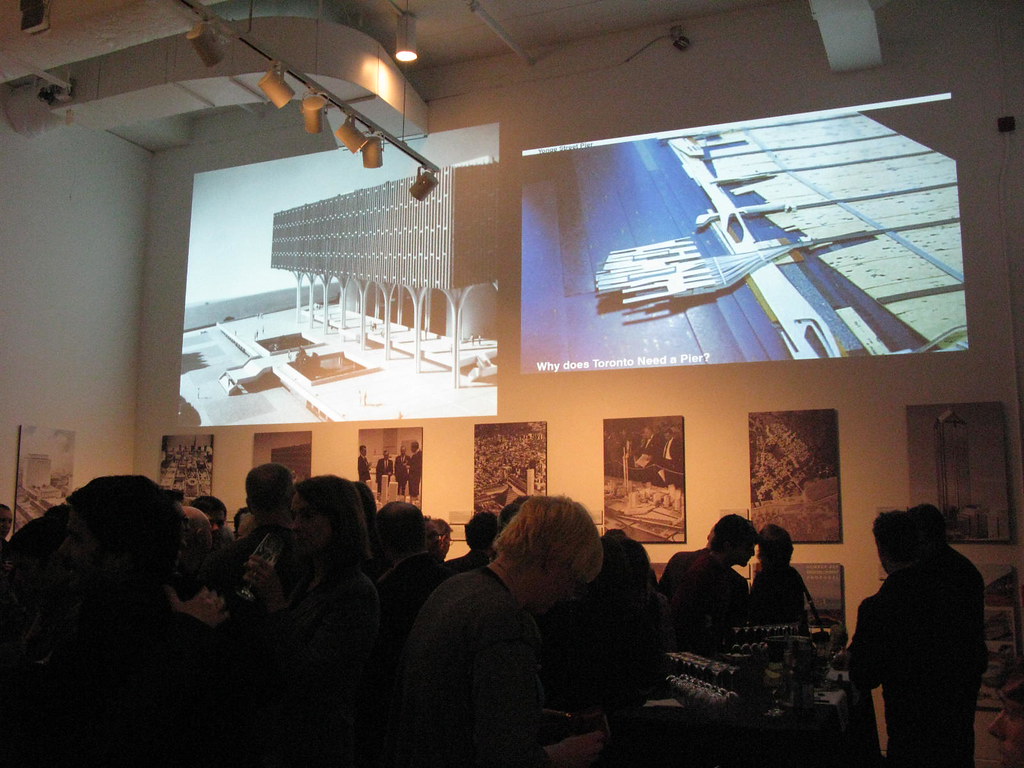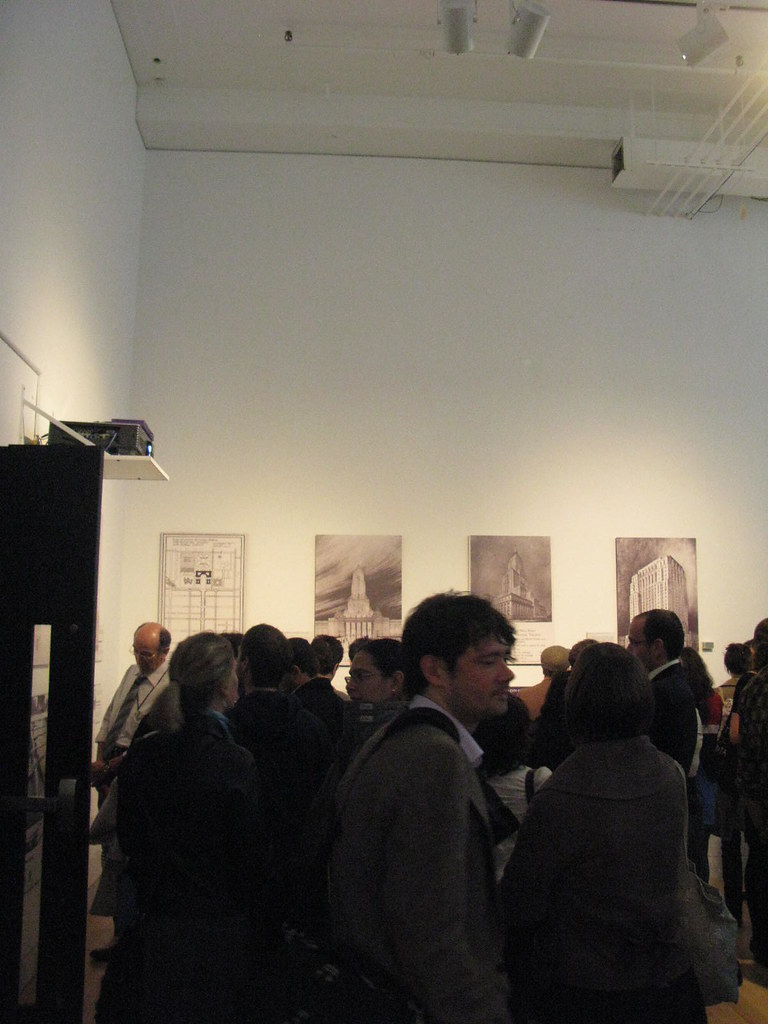Urban Shocker
Doyenne
Exhibition and Lecture at the ROM:
Unbuilt Toronto: The City That Could Have Been
ICC at the ROM partners with Toronto Society of Architects, November 5 – January 11, 2009
The Institute for Contemporary Culture (ICC) at the Royal Ontario Museum (ROM), in partnership with the Toronto Society of Architects (TSA) presents Unbuilt Toronto: The City That Could Have Been. Juried images of unbuilt projects from practising architects and designers are juxtaposed against historical images of unrealized building proposals drawn from Mark Osbaldeston’s forthcoming book, Unbuilt Toronto: A History of the City That Might Have Been (Dundurn Press, November, 2008). Exploring a Toronto that could have been, through significant building projects that never were, the exhibition is on display in the ROM’s Hilary and Galen Weston Wing, Level 2 from Wednesday, November 5 to Sunday, January 11, 2009.
“Unbuilt Toronto reveals the hidden or forgotten aspects of the cultural history of Toronto in a dynamic and accessible way” says William Thorsell, Director and CEO of the ROM. “We are pleased to work with the TSA to offer our visitors a unique view of the art, science, and oft-times politics of designing and erecting buildings.”
Presented in two parts, Unbuilt Toronto: The City That Could Have Been consists of historical images – covering more than 150 years and as selected from Mark Osbaldeston’s book. ROM visitors will be exposed to proposals for ambitious and often controversial projects such as the Civic Improvement Committee’s proposed Federal Avenue of 1911, Eaton’s 1928 stand-out College Street tower, and “Project Toronto,” Buckminster Fuller’s futuristic plan for the city from 1968.
The exhibition also features images of more contemporary unrealized projects for Toronto, many of which have never before been seen by the general public. The Toronto Society of Architects has invited designers, large and small, to submit unrealized architectural, landscape or urban design projects that might have resulted in a very different city from the one seen today. To ensure potency of dialogue, the contemporary projects submitted must have had substantial potential for realization within the Greater Toronto Area: each project had a client, was part of an invited submission, or was short-listed for a competition. Final selection by the TSA’s curatorial panel of architects, educators and urbanists will be based on design excellence, the context for cancellation, and the significance of impact had the project been realized.
“We want to bring projects to light so as to best understand whether Toronto dodged a bullet or missed an opportunity,” TSA vice-chair Phil Goodfellow “As we engage in discussion about current and future conceptions of the city, these projects are not only timely but relevant.”
This distinct overview of a Toronto that might have been provides ROM visitors with timely, provocative architectural programming framed alongside previous ICC offerings such as Hiroshi Sugimoto-Daniel Libeskind: The Conversation and the current exhibition on display until November 2, Shanghai Kaleidoscope.
Illustrated Lecture:
Mark Osbaldeston explores never-realized planning, transit and architectural schemes in and around Toronto, from the city’s founding to the 21st century on Thursday, December 4 at 7pm in the Museum’s Signy and Cléophée Eaton Theatre. The free lecture, titled Unbuilt Toronto: A History of the City That Might Have Been explores such questions as where city council would debate today if Viljo Revell hadn’t won the 1958 competition to design the new city hall, why a parcel of downtown land known was known for two decades as the “Mystery Block,” and why there is a Queen Street ghost station.
Unbuilt Toronto: The City That Could Have Been
ICC at the ROM partners with Toronto Society of Architects, November 5 – January 11, 2009
The Institute for Contemporary Culture (ICC) at the Royal Ontario Museum (ROM), in partnership with the Toronto Society of Architects (TSA) presents Unbuilt Toronto: The City That Could Have Been. Juried images of unbuilt projects from practising architects and designers are juxtaposed against historical images of unrealized building proposals drawn from Mark Osbaldeston’s forthcoming book, Unbuilt Toronto: A History of the City That Might Have Been (Dundurn Press, November, 2008). Exploring a Toronto that could have been, through significant building projects that never were, the exhibition is on display in the ROM’s Hilary and Galen Weston Wing, Level 2 from Wednesday, November 5 to Sunday, January 11, 2009.
“Unbuilt Toronto reveals the hidden or forgotten aspects of the cultural history of Toronto in a dynamic and accessible way” says William Thorsell, Director and CEO of the ROM. “We are pleased to work with the TSA to offer our visitors a unique view of the art, science, and oft-times politics of designing and erecting buildings.”
Presented in two parts, Unbuilt Toronto: The City That Could Have Been consists of historical images – covering more than 150 years and as selected from Mark Osbaldeston’s book. ROM visitors will be exposed to proposals for ambitious and often controversial projects such as the Civic Improvement Committee’s proposed Federal Avenue of 1911, Eaton’s 1928 stand-out College Street tower, and “Project Toronto,” Buckminster Fuller’s futuristic plan for the city from 1968.
The exhibition also features images of more contemporary unrealized projects for Toronto, many of which have never before been seen by the general public. The Toronto Society of Architects has invited designers, large and small, to submit unrealized architectural, landscape or urban design projects that might have resulted in a very different city from the one seen today. To ensure potency of dialogue, the contemporary projects submitted must have had substantial potential for realization within the Greater Toronto Area: each project had a client, was part of an invited submission, or was short-listed for a competition. Final selection by the TSA’s curatorial panel of architects, educators and urbanists will be based on design excellence, the context for cancellation, and the significance of impact had the project been realized.
“We want to bring projects to light so as to best understand whether Toronto dodged a bullet or missed an opportunity,” TSA vice-chair Phil Goodfellow “As we engage in discussion about current and future conceptions of the city, these projects are not only timely but relevant.”
This distinct overview of a Toronto that might have been provides ROM visitors with timely, provocative architectural programming framed alongside previous ICC offerings such as Hiroshi Sugimoto-Daniel Libeskind: The Conversation and the current exhibition on display until November 2, Shanghai Kaleidoscope.
Illustrated Lecture:
Mark Osbaldeston explores never-realized planning, transit and architectural schemes in and around Toronto, from the city’s founding to the 21st century on Thursday, December 4 at 7pm in the Museum’s Signy and Cléophée Eaton Theatre. The free lecture, titled Unbuilt Toronto: A History of the City That Might Have Been explores such questions as where city council would debate today if Viljo Revell hadn’t won the 1958 competition to design the new city hall, why a parcel of downtown land known was known for two decades as the “Mystery Block,” and why there is a Queen Street ghost station.






